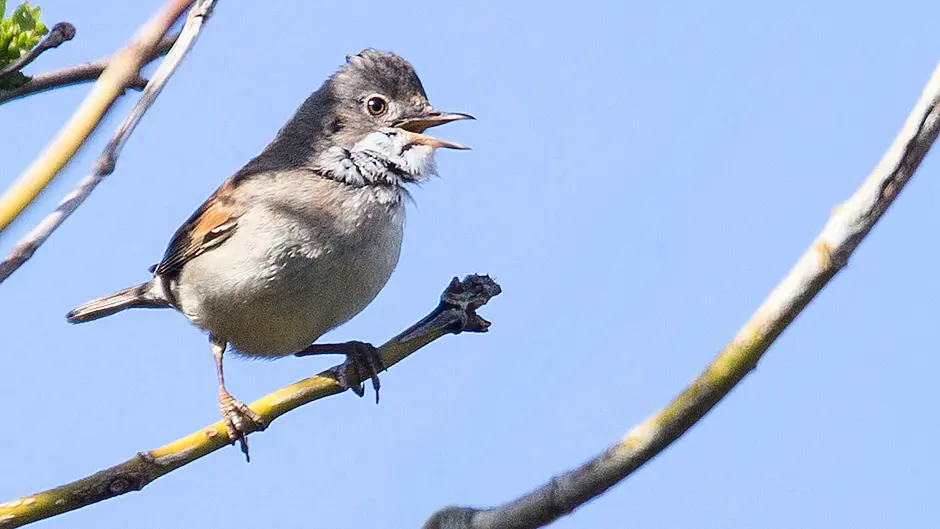WHILE August is ‘high summer’ for tourists, some of our avian visitors are already departing these shores with cuckoos, wheatears and swifts all getting ready for their big autumn migration. Another small bird – the whitethroat – will also undertake a mammoth journey to Africa soon and I will sorely miss seeing them in this locality.
The whitethroat is a reclusive warbler that can be easily overlooked. But for a few weeks in early summer, the male puts on dramatic displays to impress the female. I so enjoyed watching a male whitethroat showing off his wares this spring and consider it an honour to have a pair as new ‘blow-in’ neighbours.
Busy birds
The whitethroat is a small innocuous-looking bird that comes here from Africa to breed in spring and early summer. It can arrive as late as early May and departs in early to mid-August.
This is not a bird that lives comfortably alongside humans and, outside the mating display period, dashes off, making it hard to observe. The male whitethroat is grey-headed and brown-backed, with a rich chestnut wing patch and an obvious white throat. The female is browner and lacks the richness of colour of the male. Its name is English is self-explanatory and its Irish name, gilphíb, comes from geal-píb which also means ‘white throat’.
This small warbler packs a lot of activity into its short stay in Ireland. In just 12-14 weeks, it has to find a mate and breed, and usually manages to raise a second brood in its short time here.
The male generally arrives about a week before the female and starts to sing shortly after arrival to advertise for a mate and defend its territory.
It often engages in song flights, flying skywards to a height of about 50 feet over a hedgerow in much the same way as a skylark does to mark its territory. I witnessed my neighbour’s display flights earlier this year near a boundary hedgerow, accompanied by some jaunty phrases of song. The small bird would tumble into the bushes after this display, having established its new territory in song.
The male shows off to the female with song bursts from a branch top too. With a raised crest and puffed up body feathers, it performs in bursts of song while fanning and cocking its tail.
The song, while a bit scratchy-sounding, has the wonderful burbling resonance of a warbler.
The male goes even further to impress his potential mate, sometimes proffering fragments of dry grass to its ‘intended’ as a gift.
The courtship rituals of the pair are conspicuous and I was lucky enough to witness some of them, albeit through shaky binoculars. There were rapid darts as both birds dived into the vegetation and sometimes the chase appeared to continue on foot. This behaviour gave rise to the whitethroat’s common names of ‘nettle creeper’, ‘nettle runner’ and ‘hedge chicken’.
Once the second brood is safely on the wing, the young take off south before the adults.
A complete moult is necessary for the older birds as their feathers must be in prime condition to undertake the long migration south. None of my new neighbours has departed yet as far as I can see as there seems to be a lot of activity still going on in the blackthorn bushes.
Mammoth migration
It’s believed both young and old whitethroats converge in the south of England before crossing the Channel to northern France. They move on swiftly from there to Spain and Portugal where they feed up again for the next part of their journey. Their ultimate destination is the Sahel region, just south of the Sahara where they spend the rest of the winter.
Like many other birds that migrate to sub-Saharan areas, whitethroat numbers have declined over the last decades. The phenomenon of climate change has had huge effects on this region as longer periods of drought are affecting the ecology there.
As a result whitethroat numbers now fluctuate dramatically from year to year.
In 1968, there was a huge drop in their numbers, as much as 77%, after a severe drought in the southern Sahara. There have been several years of lesser ‘crashes’ since then with extreme variations in its numbers over the last decades
Overall, the future does not look good for these beautiful birds which is all the more reason to cherish the experience of having them as summer neighbours.







